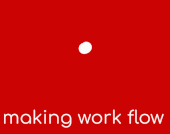
In the late 1960s, Xerox transformed the commercial world with the launch of the first commercially viable photocopiers. Through the rest of the 21st century, the photocopier became a staple part of every office.
Since then, times have changed. Photocopiers are expected to print and scan too. Technology has improved, and new features mean that updated models are rolled out with impressive regularity. Customer’s expectations have changed too. These days we expect higher quality printing, faster.
Data security is a key focus for many organisations handling personally identifiable information.
And many businesses look for all the help they can get when reducing their carbon footprint, so the environmental status of a photocopier has also jumped in significance for those looking for a photocopier.
There are so many things to consider when investing in a photocopier, the fundamental question of whether to lease or buy often gets overlooked. So, which should you opt for?
To lease or to buy?
These days more and more people are choosing to lease – cars, homes, equipment. By leasing equipment, you can take possession of it and use it as you would when purchasing outright, but payment is made in installments. By breaking payment down into regular, bite-sized chunks, the capital needed isn’t as intimidating. There are plenty of other benefits to leasing equipment rather than buying equipment and machinery.
Photocopier lease agreements are very similar to rental agreements. Like rental agreements, installments are paid for the use of the equipment. However, unlike rental agreements, a lease usually gives a set amount of time that the agreement and the repayments continue. In comparison, a rental agreement is usually a rolling agreement that ends only when one company notifies the other.
The pros and cons of buying
However:
The benefits and drawbacks of leasing
Traditionally, people tended to be more adverse to leasing equipment. Back in the 1980s, the number of companies buying or leasing devices was probably equally split, but today more than 80% of businesses lease their copiers.
Technology, inflation, and consumerism mean that it often makes more sense in today’s economy to lease rather than to purchase equipment outright.
Good reasons to lease include:
But there are some drawbacks to sourcing your photocopier this way:
What to look for in your lease
How long?
Lease copier terms generally run from anywhere between 12 and 60 months, but 36 months is a typical agreement length and makes sense for most organisations.
How much?
Before approaching a lease provider, work out your copy volume. The cost of your lease will likely be linked to your usage, so having a clear idea of your expected use will give you a clearer idea of the financial commitment you’re making. Lease copier contracts tend to vary from 5,000 pages to 50,000 pages.
What features?
Consider the features you need. Will you require duplex printing and automatic document feeding? Do you need a stapling and hole-punching feature? Most offices will also need scanning, faxing and email capabilities.
What flexibility?
With flexible service agreements, leasing is more flexible than ever and, at a time when businesses are huge changes in demand, operational processes and workforce requirements, this flexibility is essential for organisations to meet the expectations of their customers.
The ability to tailor the terms and features of your agreement precisely to your budget and operational needs means that the financial benefits of leasing and the flexibility it offers, for most businesses, far outweighs any concerns that businesses may have about leasing their equipment. Read more about ASL Flex here.

